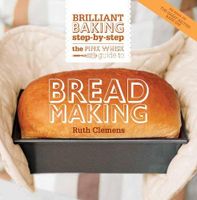Label
All
0
Clear all filters
Save 25% on ckbk Premium Membership with code FALLFLAVORS 🍁
Second Proving or Rising
Appears in
By Ruth Clemens
Published 2013
After shaping your loaf the dough should be allowed to prove or rise for a second time. It needs to be covered to prevent the dough from drying out, either with a clean dish towel or a sheet of thin plastic. An opened-out freezer bag is useful for covering baking sheets; loaves in tins (pans) can be loosely covered with cling film (plastic wrap) or a clean disposable shower cap. Shaped dough should be allowed to get to 85–90 per cent increased in size, which is why it’s referred to in recipes as ’almost doubled in size’. The heat from the oven gives some final oomph and makes the dough rise upwards in a last satisfying burst. The second proving is quicker than the first rise and (for regular doughs) should take 30–60 minutes. Getting this second rise is an important stage. Take care not to over-prove your dough or the loaf may collapse on baking. Under-proving can cause the top crust to balloon up and away from the bread leaving you with a gaping hole when sliced.
Become a Premium Member to access this page
Unlimited, ad-free access to hundreds of the world’s best cookbooks
Over 160,000 recipes with thousands more added every month
Recommended by leading chefs and food writers
Powerful search filters to match your tastes
Create collections and add reviews or private notes to any recipe
Swipe to browse each cookbook from cover-to-cover
Manage your subscription via the My Membership page
Best value
Part of
Advertisement
Related Recipes
-
-
-
-
Related Reference
-
-
-
-
Advertisement
The licensor does not allow printing of this title



